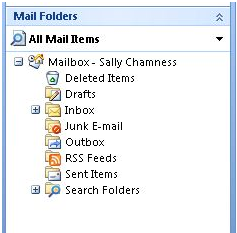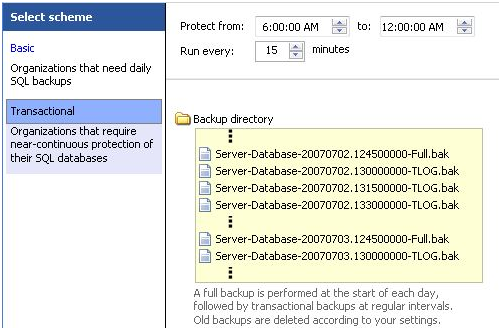Backing up Exchange Server
Q: What type of Exchange backup do I need to run? Information Store or Individual Mailbox?
The BackupAssist Helpdesk Team receives many enquiries about what kind of backups to run for Exchange servers. However, the answer is different for every business. When determining what type of Exchange backup you need to perform, you must consider the data that you will need to restore. The following information will help you decide what kind of backups you need to run.
Information Store backup
The Information Store backup will perform a full backup of your Exchange Information Store allowing for a complete Exchange server restore in a disaster recovery scenario. Information Store backups are performed on a daily basis and any number of Information stores can be backed up.
This backup method allows the entire Exchange server to be restored up to the point in time that the backup was performed. However, if a failure occurs after the backup was made, any recent mail may be lost. That's because an Information Store backup can only restore information that was backed up when the backup was made, it will not include mail sent or received during the period of time since the backup was performed and the time of the failure. More details on Information Store backup are available here:
http://www.backupassist.com/downloads/whitepapers/ExchangeBackupAndRestore_WP.pdf
You can also restore mailboxes from an Information Store backup using recovery storage groups. However, it should be noted again that recent mail items may be lost using this method. More information on how to do this is available here: http://www.backupassist.com/downloads/RestoringExchange.pdf
Individual Mailbox backups:
The Individual Mailbox backup facility will backup each user mailbox from the Exchange server to a PST file at the specified destination, making it much easier to restore an Individual Mailbox.

With this method, all of the information in the mailbox (as shown above) will be backed up to the mailbox PST. This type of backup allows for the recovery of individual emails or items to be restored for a specific user without the need to restore the whole server, as with Information Store restore operations. It will also allow you to set backups to run more regularly throughout the day to minimize data loss in the event of a failure.
Using the Exchange Mailbox backup facility will prevent any interruption for other users on the server in the event that you need to restore an Individual Mailbox only. To perform an Individual Mailbox restore, all you need to do is simply open the backup PST file within Outlook and copy your data back to the mailbox.
One of the above backup methods is not necessarily better than the other; ideally for complete disaster recovery needs it would be best to perform both types of backups, so that all bases are covered. If you need to perform an Individual Mailbox backup, details on the options available are outlined in the following whitepaper:
http://www.backupassist.com/downloads/quickstart/ExchMailbox.pdf
Backing up SQL server.
Q: What the is the difference between performing a regular SQL backup and a Transaction Log backup, and what are the benefits for each?
Another frequently asked question fielded by the Helpdesk Team is about the uses of a SQL backup and a Transaction Log backup. It's important to know the answer so you can make sure you're covered in every data recovery scenario!
SQL backups
A regular SQL backup will allow for a daily full backup of your SQL server and any selected databases to be performed once a day, at a time that you choose. This is suitable for those who have databases which do not change in data by much on a daily basis and facilitates the full database or server to be restored.
Transaction log backups
A Transaction Log backup contains a lot more data. With a Transaction log backup, you will specify a backup window for the days you wish to perform your backups. You will then specify a time interval that you wish to have your backups run.
For example, you could specify that you wish to have your backups run from 6am to 8pm Monday - Friday. You also specify a 15 minute interval in your backup.
At 6am a full backup of your SQL server will be performed. Every 15 minutes after this time, a transaction log backup will be performed, which backs up the transaction logs of your databases. These backups will continue until 8pm. Then at 8pm a final full backup of your SQL server will be performed.

The benefit of a Transaction Log backup is that you can perform a restore of your SQL server to a specific point in time during the day (within the 15 minute window), reducing the amount of data or transaction loss you would incur.
This type of backup is good for anyone who has SQL databases which have a lot of data changing throughout the day, and need to make sure they are able to recover as much data as possible.
For more information on BackupAssist SQL backup processes, please read our SQL Whitepaper:
http://www.backupassist.com/downloads/whitepapers/SQL_WP.pdf
I hope this information helps you decide what kind of backups you need to run for your Exchange and/or SQL Servers. If you need any more assistance, please remember that the BackupAssist Helpdesk Team is always on hand to help - just send us an email at ![]() !
!

 Belgium
Belgium Canada
Canada Germany
Germany Italy
Italy France
France Spain
Spain United Kingdom
United Kingdom

